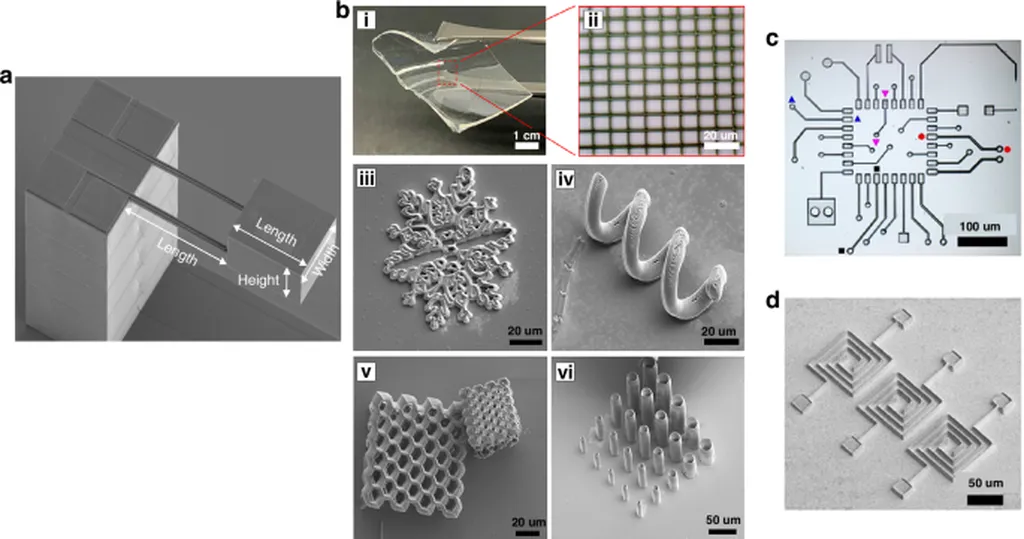In a groundbreaking development poised to revolutionize the construction and energy sectors, researchers have unveiled a novel material that combines the versatility of 3D printing with the dynamic properties of photochromism. This innovation, spearheaded by Alister Urain at the POLYMAT University of the Basque Country UPV/EHU in Spain, introduces gel nanocomposites (gel NCs) that can reversibly transition from transparent to dark blue when exposed to UV light, offering promising applications for heat management and decorative design.
The research, published in *Macromolecular Materials and Engineering* (which translates to *Macromolecular Engineering and Materials* in English), details the creation of a photocurable acrylic resin embedded with tungsten oxide nanoparticles (WO3 NPs). This resin, when polymerized under light, forms gel NCs that exhibit remarkable photochromic behavior. “The gels demonstrate high luminous transmission and significant optical modulations, with a coloration speed of less than a minute,” explains Urain. This rapid response to UV light makes the material highly suitable for dynamic heat management applications.
One of the key advancements in this research is the use of ethylene glycol and a lithium salt as co-plasticizers. These additives not only enhance the gels’ coloration kinetics but also provide anti-freezing and anti-drying capabilities, ensuring the material’s durability and performance in various environmental conditions. “The addition of these components significantly improves the gels’ functionality and longevity,” notes Urain, highlighting the practical implications of the innovation.
The potential commercial impacts of this research are substantial. In the energy sector, the ability to modulate light transmission can lead to more efficient building designs that dynamically respond to environmental changes, reducing the need for artificial lighting and cooling. This can result in significant energy savings and lower carbon footprints for buildings. Additionally, the material’s decorative applications are vast, allowing for the creation of custom-designed, light-responsive surfaces that can enhance aesthetic appeal while serving functional purposes.
The research also demonstrates the feasibility of using the photocurable resin with digital light processing (DLP) 3D printing technology. This opens up new avenues for additive manufacturing, enabling the production of complex, customized designs with integrated photochromic properties. “The ability to 3D print these gels with precision and detail is a game-changer for the construction and design industries,” says Urain, emphasizing the material’s versatility and potential for innovation.
As the world continues to seek sustainable and efficient solutions for energy management and design, this breakthrough offers a promising path forward. The integration of photochromic materials into 3D printing technologies could pave the way for smarter, more responsive buildings and structures, ultimately contributing to a more sustainable future. With further research and development, the applications of these gel NCs are poised to expand, shaping the future of construction and energy sectors in profound ways.

